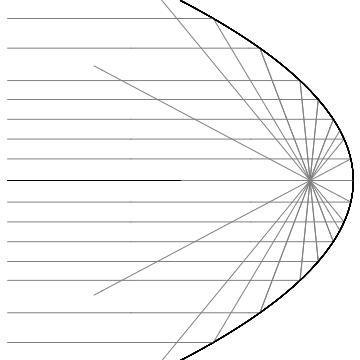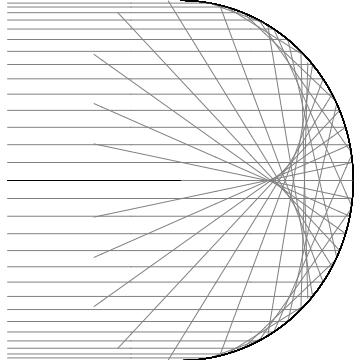| Saturday | |
|---|---|
| 9:30 | Breakfast |
| 10:00 | Plamen Stefanov, Purdue University Local lens rigidity |
| 11:00 | Xuwen Zhu, Stanford University The configuration space of constant curvature metrics with conical singularities |
| 2:00 | Semyon Dyatlov, Massachusetts Institute of Technology Semiclassical measures on hyperbolic surfaces |
| 3:00 | Coffee break |
| 3:30 | Peter Perry, University of Kentucky Soliton Resolution for Completely Integrable PDE's in One Space Dimension |
| 4:30 | Alejandro Uribe, University of Michigan Isotropic semiclassical states and applications |
| Sunday | |
| 9:30 | Breakfast |
| 10:00 |
Tanya Christiansen, University of Missouri Wave expansions for manifolds with infinite cylindrical ends |
| 11:00 |
Steve Zelditch, Northwestern University Norms of eigenfunctions on manifolds with concave boundary |
Limited funding was available for student and postdoc attendees.
Abstracts
Wave expansions for manifolds with infinite cylindrical ends
The Laplacian on a manifold with infinite cylindrical ends has continuous spectrum, with infinitely many thresholds — points where the multiplicitly increases.
In addition, the Laplacian may have embedded eigenvalues. These manifolds also have the property that even in the simplest cases the trapped
set is noncompact.
Despite this, assuming a high-energy resolvent estimate holds we are able to find a asymptotic expansions of solutions of the wave equation on
compact sets, with frequencies determined by the eigenvalues and thresholds. These resolvent estimates hold under favorable geometric conditions. For
more general manifolds with infinite cylindrical ends we can find asymptotic expansions on compact sets if the solutions are
localized in frequency.
This talk is based on joint work with Kiril Datchev.
Semiclassical measures on hyperbolic surfaces
On a compact hyperbolic surface, a semiclassical measure is an invariant probability measure on the cosphere bundle which arises as the high frequency limit of a sequence of eigenfunctions of the Laplacian. The quantum unique ergodicity conjecture states that the only such measure is the Liouville measure, however so far it has only been established in the very algebraically special case of the modular surface.
I will present a new restriction on semiclassical measures: their support equals the entire cosphere bundle. The key new ingredient is a fractal uncertainty principle, stating that no function can be localized close to a porous set in both position and frequency. This talk is based on joint works with Long Jin and with Jean Bourgain.
Soliton Resolution for Completely Integrable PDE's in One Space Dimension
The soliton resolution conjecture for a dispersive nonlinear equation says roughly that solutions of the Cauchy problem for generic initial data should resolve into finitely many solitons (stable traveling waves) plus a radiative term that dissipates to zero. For completely integrable PDE's, the inverse scattering method and the Deift-Zhou method of nonlinear steepest descent (Ann. Math., 1993) provides a means to prove rigorous estimates on the asymptotic behavior of solutions, although previous applications of the method focussed largely on systems without solitons. Recent advances in the asymptotic analysis of Riemann-Hilbert problems have made it possible to obtain explicit formulae with precise error estimates for the cubic nonlinear Schrodinger equation (Borghese, Jenkins, and McLaughlin) and the derivative nonlinear Schrodinger equation (Jenkins, Liu, Perry, and Sulem). In this talk I'll provide an introduction to the nonlinear steepest descent method, explain how it is adapted to analyze scattering with solitons and show how it is used to compute the interaction between solitons and radiation.
Local lens rigidity
Abstract: The boundary rigidity problem consist of recovering the metric in a domain, up to an isometry, from the distance between boundary points. We show that in dimensions three and higher, knowing the distance near a fixed strictly convex boundary point allows us to reconstruct the metric inside the domain near that point, and that this reconstruction is stable. We also prove semi-global and global results under certain convexity conditions. The problem can be reformulated as a recovery of the metric from the arrival times of waves between boundary points; which is known as travel-time tomography. The interest in this problem is motivated by imaging problems in seismology: to recover sub-surface structure of the Earth given travel-times from the propagation of seismic waves. In oil exploration, the seismic signals are man-made and the problem is local in nature. In particular, we can recover locally the compressional and the shear wave speeds for the elastic Earth model, given local information. Similar but much less complete results for Lorentzian metrics will be discussed. The talk is based on joint work with Uhlmann (UW) and Vasy (Stanford).
Isotropic semiclassical states and applications
Norms of eigenfunctions on manifolds with concave boundary
On a compact Riemannian manifold (M,g) without boundary, there
is a standard sup norm estimate of eigenfunctions obtained from a remainder
estimate in the pointwise Weyl law. Sogge and I showed that it is not achieved
for a generic (M,g) and gave a necessary condition in terms of loops. The proof
is based on parametrix constructions for the wave group and does not extend
to manifolds with boundary due to lack of good parametrices. But if the boundary
is concave, the Melrose-Taylor parametrices can be used to prove that Cauchy
data of eigenfunctions in the diffractive boundary case with a zero measure boundary
loop condition never achieves the maximum
sup norm bounds that occur on the upper hemisphere of the sphere. Most of the
novel aspects of the proof
are an adaptation of Melrose's proof of the Weyl law with small oh remainder on a
manifold with concave boundary. Consequently, much of my talk is devoted to background on diffractive parametrices.
The configuration space of constant curvature metrics with conical singularities
We would like to understand the deformation theory of constant curvature metrics with prescribed conical singularities on a compact Riemann surface. In the positive curvature case, when some or all of the cone angles are bigger than 2π, the analysis is much more complicated than the small angle case. We discover that one key ingredient of the obstructed deformation is related to splitting of cone points. We construct a resolution of the configuration space, and prove a new regularity result that the family of constant curvature conical metrics has a nice compactification as the cone points coalesce, and moreover, the fibrewise family of constant curvature metrics is polyhomogeneous on this compactification. And we hope to apply this new construction to describe the moduli space of spherical conic metrics with no angle constraints. This is joint work in progress with Rafe Mazzeo.
Organizers
Funding

